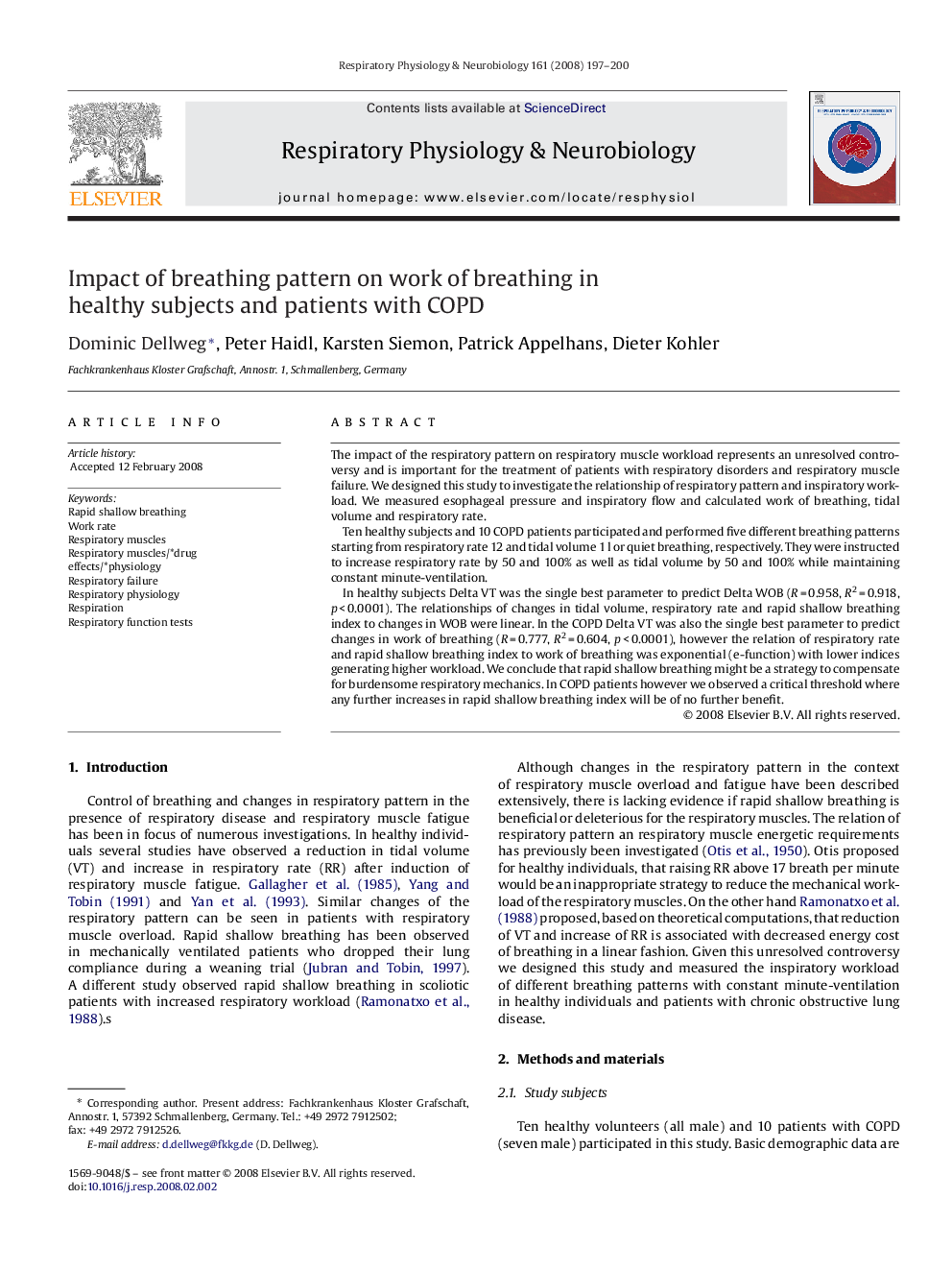| کد مقاله | کد نشریه | سال انتشار | مقاله انگلیسی | نسخه تمام متن |
|---|---|---|---|---|
| 2848156 | 1167407 | 2008 | 4 صفحه PDF | دانلود رایگان |

The impact of the respiratory pattern on respiratory muscle workload represents an unresolved controversy and is important for the treatment of patients with respiratory disorders and respiratory muscle failure. We designed this study to investigate the relationship of respiratory pattern and inspiratory workload. We measured esophageal pressure and inspiratory flow and calculated work of breathing, tidal volume and respiratory rate.Ten healthy subjects and 10 COPD patients participated and performed five different breathing patterns starting from respiratory rate 12 and tidal volume 1 l or quiet breathing, respectively. They were instructed to increase respiratory rate by 50 and 100% as well as tidal volume by 50 and 100% while maintaining constant minute-ventilation.In healthy subjects Delta VT was the single best parameter to predict Delta WOB (R = 0.958, R2 = 0.918, p < 0.0001). The relationships of changes in tidal volume, respiratory rate and rapid shallow breathing index to changes in WOB were linear. In the COPD Delta VT was also the single best parameter to predict changes in work of breathing (R = 0.777, R2 = 0.604, p < 0.0001), however the relation of respiratory rate and rapid shallow breathing index to work of breathing was exponential (e-function) with lower indices generating higher workload. We conclude that rapid shallow breathing might be a strategy to compensate for burdensome respiratory mechanics. In COPD patients however we observed a critical threshold where any further increases in rapid shallow breathing index will be of no further benefit.
Journal: Respiratory Physiology & Neurobiology - Volume 161, Issue 2, 30 April 2008, Pages 197–200